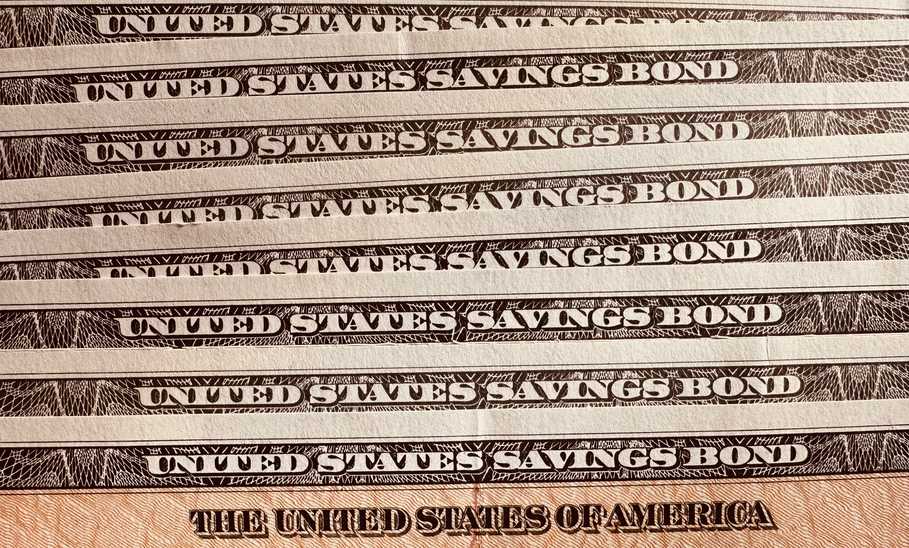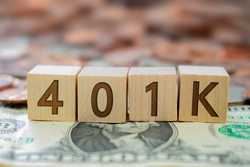How Do Savings Bonds Work? An Essential Guide.

Our evaluations and opinions are not influenced by our advertising relationships, but we may earn a commission from our partners’ links. This content is created by TIME Stamped, under TIME’s direction and produced in accordance with TIME’s editorial guidelines and overseen by TIME’s editorial staff. Learn more about it.
Savings bonds are a conservative way to save money with guaranteed interest payments from the federal government. Investors buy them at a discount from the government and receive the full face value of the bond upon maturity. These investments balance risk in your portfolio during your working years and provide guaranteed returns for your retirement portfolio. Learn more about how savings bonds work, how they accrue interest, the types of bonds available and where to buy them.
A savings bond is a type of bond that is issued by the government. Investors lend money to the government in exchange for interest and repayment of their principal by a certain date. These bonds are sold to the general public through the Treasury Department website and Federal tax returns.
Savings bonds are guaranteed by the federal government. Therefore, they are a safe option for your savings. Many investors use savings bonds to reduce risk in their portfolios or to earn interest income for retirement.
Like other bonds, savings bonds earn interest throughout their life. However, what sets them apart is that they do not provide interest payments to investors. Instead, savings bonds are sold at a discount, and the interest accrues over time. When the bond matures, the savings bond will reach its full value.
Savings bonds are attractive to investors because of their tax advantages. Investors can choose to pay taxes on the interest earned each year, or they can wait until it matures. Additionally, savings bonds are exempt from state and local income taxes.
Interest on savings bonds is earned on a monthly basis, but the interest is only compounded once every six months. This means that the accrued interest is added to the current balance only twice a year. When accrued interest posts, your new balance is the old balance plus all accrued interest over the last six months. Your bond's value increases over time as accrued interest is added to your balance.
The rules on older Series EE savings bonds may vary based on when they were issued. The Treasury Direct website provides interest accrual details on older U.S. Savings Bonds.
Investors can buy U.S. Savings Bonds in electronic or paper form. The form depends on the type and which channel they purchase them. Electronic (or digital) Series EE and Series I savings bonds are both available through the Treasury Direct website.
While investors could previously buy paper Series EE savings bonds from the Treasury until 2012, that is no longer an option. Only Series I Savings Bonds are available in paper form. To buy them, you can use a portion of your tax refund when filing your taxes.
The U.S. Treasury currently offers two types of savings bonds to investors: Series EE Bonds and Series I Bonds. Each type of bond has unique pros and cons that fit different investor profiles and goals.
Investors who buy Series EE savings bonds earn a fixed rate of interest during the first 20 years, then it adjusts for the remaining 10. The government guarantees that these will double in value in 20 years, even if it must add money to your account balance to make that happen.
Investors concerned with inflation typically invest in Series I Bonds. These savings bonds offer a fixed base rate plus an interest rate that changes with inflation. The inflation rate adjusts every six months on April 1st and November 1st based on current inflation.
Savings bonds are a good investment for people who want a safe investment with guarantees backed by the federal government. With this guarantee, investors are assured that they'll receive a return of their principal and interest payments.
Investors often use U.S. Savings Bonds to reduce the risk in their portfolios.Savings bonds also provide a safe place to store cash during uncertain times. Series I Bonds ensure that your money will retain its purchasing power by adjusting rates to current inflation levels.
The interest may also be exempt from taxes when using the money to pay for qualified higher education expenses. This makes them a good alternative to a 529 plan for education funds.
Pros
Cons
Savings bonds are a good investment when you want to reduce your risk. U.S. Savings Bonds are backed by the full faith and credit of the United States, which has never defaulted on its debt. The Federal government guarantees that you'll receive your principal and interest payments.
Series I Bonds are also a good investment during periods of high inflation. Their interest rate adjusts every six months based on current inflation readings. These adjustments ensure that your money isn't losing purchasing power when it's stuck in a low-rate investment.
Investors can purchase U.S. Savings Bonds two ways – on the Treasury Direct website or when filing taxes.
Electronic Series EE Bonds and Series I Bonds are available through Treasury Direct at any time. You can purchase them in any amount, down to the penny, above $25. However, there are maximum annual purchase limits per Social Security Number.
Additionally, you can buy paper I Bonds with your tax refund. Paper I Bonds are available in denominations of $50, $100, $200, $500 or $1,000.
These limits are per person, based on the first Social Security Number on the savings bond. This means that each person in a couple can max out these limits to effectively double the amount of bonds your household can buy. Additionally, you can purchase savings bonds as gifts for your children, relatives or friends if you have their Social Security Number and Treasury Direct account number.
When purchasing U.S. Savings Bonds, it can be a challenge to keep track of their values over time. Fortunately, the Treasury Direct website offers a simple online calculator that estimates the value of your paper savings bonds. The table below illustrates the value of these savings bonds as of March 2023.
For investors who purchased electronic savings bonds, you can get an up-to-date value of your bonds by logging into your Treasury Direct account. The website provides details on each savings bond, as well as your entire portfolio of bonds. These details include the amount and date of purchase, current value, interest earned, accrued interest and maturity date. Its dashboard also shares the entire history of each bond and lets you monitor future purchases and reinvestments. For these bonds issued in May 2000, the interest rate is 2.99%.
| Face Value | Purchase Amount | 20-Year Value (Purchased May 2000) | 30-Year Value (Purchased May 1990) |
|---|---|---|---|
$50 Bond | $100 | $109.52 | $207.36 |
$100 Bond | $200 | $219.04 | $414.72 |
$500 Bond | $400 | $547.60 | $1,036.80 |
$1,000 Bond | $800 | $1,095.20 | $2,073.60 |
The value of a savings bond after 30 years depends on the type of savings bond purchased and the interest rate it earns. To get an estimated value of your savings bonds, visit the Treasury Direct website to enter your bond's details. Series EE and Series I bonds no longer earn interest when they reach maturity 30 years from the date of issuance.
If you have any bonds older than 30 years, we recommend cashing them in immediately because they are no longer earning interest. You can reinvest into new bonds at today's interest rates, invest the money into another type of investment through your brokerage account, or deposit the money into your bank account.
You can cash in your savings bond at any time 12 months after you've purchased it. The process varies whether you have an electronic savings bond or a paper one.
To cash in an electronic savings bond, log into your Treasury Direct account. Go to ManageDirect and use the link for cashing securities. Select which bond you want to cash out. With electronic savings bonds, you can cash out some or all of the bonds. The minimum cash-out amount is $25 and can be exact to the penny. If you choose to cash out a portion of it, you must leave at least $25 in your account.
Paper savings bonds can be cashed out at a local bank or by mailing the paper bond to the U.S. Treasury. At your local bank, bring the paper bond and identification. Not all banks cash savings bonds, so call ahead to verify if they'll cash the bond, what limits they may have and what identification they require.
To cash out a paper savings bond through the U.S. Treasury, fill out Form 1522 and mail it to the address on the form. If you're cashing out more than $1,000, you need to get your signature certified.
Keep in mind that there is a penalty if you cash in your savings bonds during the first five years. If a penalty applies, you'll lose the last three months of interest.
Savings bonds are generally used to reduce risk in a portfolio rather than maximizing returns. However, that doesn't mean that you have to settle for subpar returns. Here are a few tips to maximize your earnings with savings bonds.
While U.S. Savings Bonds offer many advantages, they aren't the best investment for every situation. Before buying your savings bonds, look at these alternatives to determine if they're a better fit. A financial advisor from WiserAdvisor can help you strategize where they fit into your overall savings goals.
Find the right financial advisor with WiserAdvisor
Find the right financial advisor with WiserAdvisor
High-yield savings accounts. A high-yield savings account is a liquid account that offers a high interest rate. Many of these accounts offer no minimum balance and do not charge monthly fees. However, you may need to meet balance requirements in order to earn their highest interest rates. For example, with CIT Bank, you can earn up to 5.00% APY* with on a balance of $5,000 or more.
Certificates of deposit (CDs). A certificate of deposit offers a fixed interest rate for a specific period of time. Banks issue CDs with different interest rates and maturity dates. The minimum CD balance varies by bank, so shop around to balance rates, duration and deposit amount that matches your goals. Keep in mind that most CDs charge a penalty if you close your account before it matures. However, some issuers like CIT Bank, offer a No-Penalty CD, where you can withdraw the total balance and interest earned without penalty, beginning 7 days after funds have been received for you CD.
Short-term T-Bills. Treasury Direct also sells Treasury Bills (T-Bills) for terms ranging from four weeks to one year. There is a minimum investment of $100, and you can hold to maturity or sell before they mature. T-Bills are also exempt from state and local income taxes. You can buy treasury bills with Public Investing App and manage your investments right alongside your stocks, ETFs, crypto, and alternative assets.
Money market accounts. Money market accounts are offered by banks and investment firms. They offer liquidity and interest like a savings account, but some also have check-writing capabilities like a checking account. Quontic MMA is an excellent option for those looking for a combination of savings and checking account features, given competitive interest rates, lower fees and minimum balance requirements.*Minimum balance requirements and monthly fees vary by financial institution, so shop around for the best deal.
Current Series EE and Series I savings bonds mature 30 years from their date of issue. Older savings bonds may have shorter or longer maturity periods, depending on their type and issue date. When a U.S. Savings Bond reaches final maturity, it stops earning interest and should be redeemed and reinvested immediately.
Savings bonds are guaranteed by the federal government and will not lose money. However, if you cash them in before maturity, you may incur a penalty. If you cash in a Series EE or Series I Bond during the first five years, you'll lose the last three months of interest.
When comparing savings bonds vs. savings accounts, each one is a good option to meet certain goals. Savings bonds offer guaranteed values and higher interest rates, but they generally require your money to stay invested for longer periods of time. Savings accounts typically provide lower interest, but their liquidity makes them a great place for emergency funds.
Although savings bonds don't expire, they stop earning interest when they reach full maturity. Mature savings bonds can store value, but inflation erodes their purchasing power over time. Because of that, it is important to redeem mature bonds and reinvest the proceeds into another savings bond or other investing options.
*Limit of 6 withdrawals per statement cycle.
The information presented here is created by TIME Stamped and overseen by TIME editorial staff. To learn more, see our About Us page.





